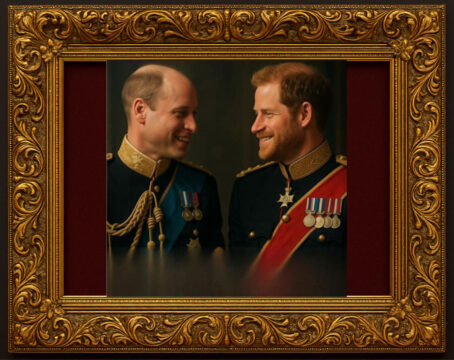That photo might be an AI fake, here’s how to tell

Did Prince William and Prince Harry make up?
Not even close. But thanks to Bing’s AI image generator, they practically skipped through a meadow hand in hand like it’s the finale of a very weird British rom-com reboot. No Daddy intervention, therapist or overpriced raspberry jam required.
To get around Bing’s copyright controls, I didn’t use their names. Here’s the prompt: “Two brothers in their 30s, holding hands, gazing lovingly, dressed in royal military uniforms. One’s bald, one’s a redhead. Cinematic lighting. Photorealistic. 16:9 ratio.”
And yeah, the photos are one pixel glitch away from joining the cast of The Polar Express.
If I had time, though, I could make them look very real. With scams on the rise and fake news everywhere, spotting phony photos is a superpower you need. So let’s talk about how you can do it first with a little help from tech.
🔍 Tools see through the fakery
Sure, you should still do a good ol’ reverse image search. But today’s AI tools are getting scary smart. The image might be brand-new and never have existed on the web before. That’s when the next-level detection comes in.
Meet these AI detectives:
- DeepFake-o-meter: Upload a photo or video, and it’ll scan it with multiple detection models to tell you how fake it might be. I got a “server busy” message testing my princes’ image.
- Sightengine: A behind-the-scenes powerhouse that spots digital tampering, even if the naked eye can’t. It gave me 99% that the princes were fake.
- Hive’s AI-generated image detector: Used by major media outlets to tell if that photo of the pope in a Balenciaga jacket is AI (Spoiler: It was). Yup, the princes are 99% AI foolery here, too.
These tools aren’t foolproof, but they’re your best shot at sniffing out the phonies. It’s like using a blacklight at a hotel: Once you see what’s there, you’ll never trust blindly again.
🚨 Red flags to watch for
You don’t need fancy tools to start spotting fakes. Your own eyes can still catch some classic tells:
- Hands and fingers: AI still struggles with hands. Look for too many fingers, weird fingernails or melting shapes.
- Eyes and earrings: AI often makes overly symmetrical faces with identical earrings, eyelashes or reflections. Real faces have flaws.
- Lighting issues: Do the shadows fall the wrong way? Is someone’s face lit up but there’s no light source?
- Backgrounds: Look for distorted text, strange street signs or weird repeating patterns.
- Skin texture: Overly smooth, plastic-looking skin? That’s your cue to take a closer look.
Quick tip: If you see something suspicious spreading on social, don’t just scroll past. Tap the three dots and Report it, especially on Facebook, Instagram or X (Twitter). You could stop the next big fake from going viral.
🎨 Did you hear that Harry is taking up painting full-time after stepping down from the royal family? He’ll be the artist formerly known as Prince. (Yea, that was one of my better ones!)
🫡 Got that smile (or smirk) going? Good, now hit the share icons below to post this must-know info on your social, or send it to someone who needs to see it.